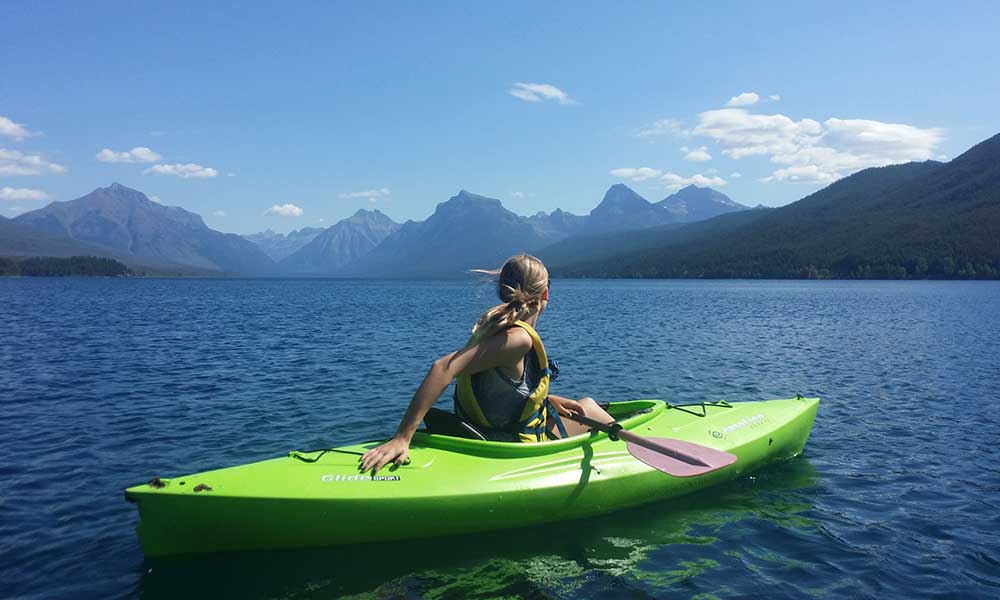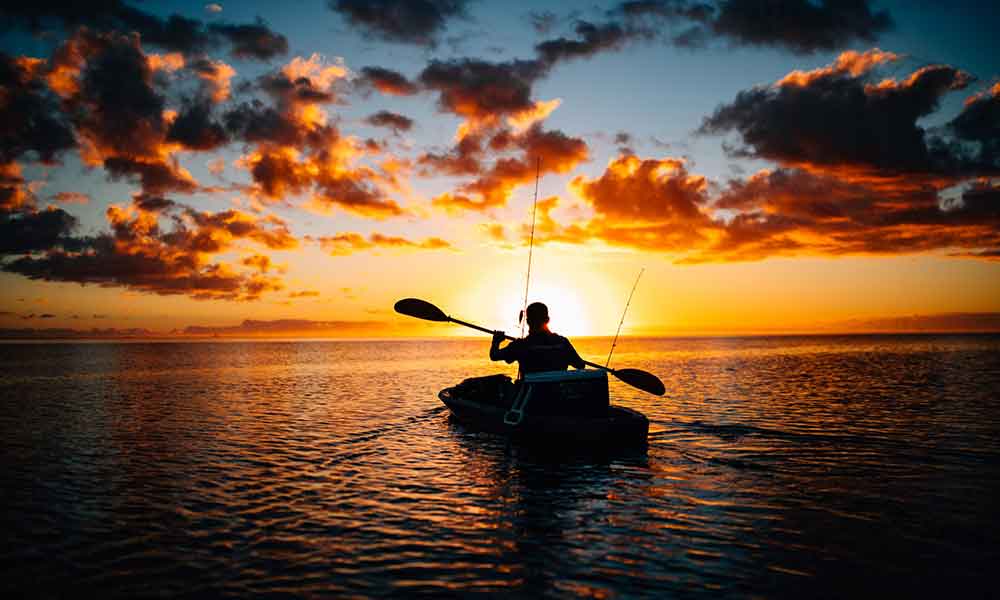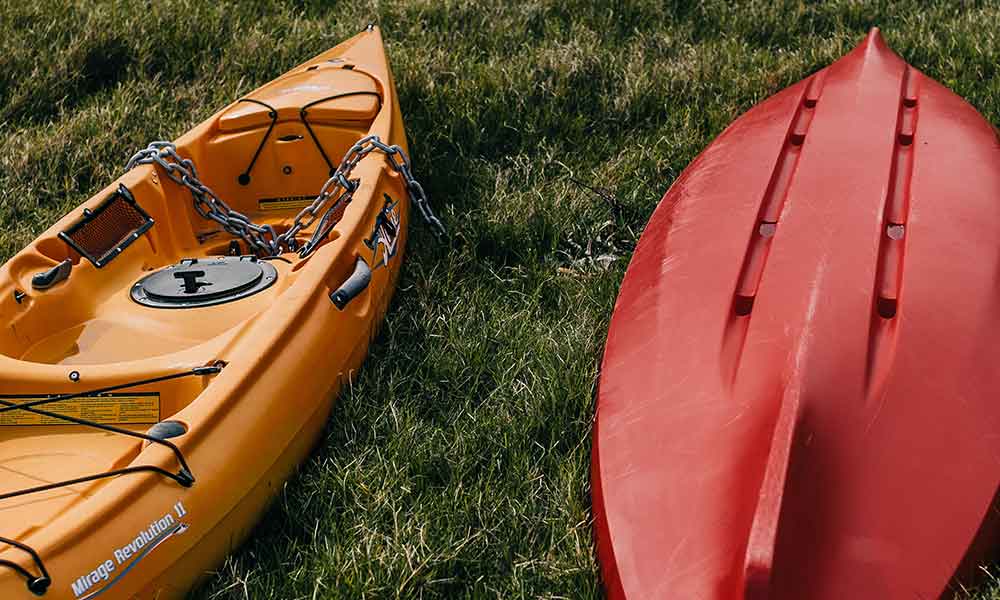Choosing a kayak can be a challenge with the wide variety of available choices. How do you know if you are making the right choice with the kayak’s type, size, and features? We understand the challenges facing new kayak buyers, so we have compiled a guide to help you decide on the right kayak for your requirements.
Choosing a kayak requires considering the purpose you will be using the kayak for, your stature, the packing space needed, and your kayaking skill level. The sitting position on or in the kayak and the material the kayak is made from are also decision points for your purchase.
The first steps in choosing a kayak are analyzing your kayaking requirements and subsequently finding a kayak among the multitude of choices that match your needs. Use our guide to help you navigate these waters and choose a kayak that you will enjoy for years to come.
What To Look For When Buying A Kayak
Choosing a kayak requires taking an in-depth look at what type of kayaking you will be participating in and your current kayaking skills. The kayaking locations and the type of waters you will be kayaking will also determine the kind of kayak you select.
What Type Of Kayaking Are You Doing?
There are many kayaks designed for specific types of kayaking, which means you need to answer this question as one of the initial steps to selecting the right kayak.
Here are some of the choices you should be considering.
- Flatwater kayaking. Almost any kayak will work here, including sleek racing kayaks and wide-hulled, stable kayaks.
- River kayaking. River kayaking requires a more stable boat due to the rougher conditions. Shorter kayaks are better in rivers for negotiating narrow channels.
- Whitewater kayaking. Negotiating rapids requires a robust kayak specifically designed for these conditions, usually made from plastic than carbon fiber or other materials.
- Fishing from a kayak. A specialized fishing kayak is needed for a stable platform for casting and reeling in your catch, as well as carrying additional gear.
- Coastal kayaking. This requires a kayak that will handle the swells and breakers on the sea.
- Long-distance kayaking. Kayaks with ample storage compartments are needed for this type of kayaking.
- Kayaking alone or with a partner? Will you be needing a single kayak or a tandem?
- Will you be camping on kayaking trips? Good storage options and dry storage compartments will be a requirement.
- Do you need a sit-on or a sit-in kayak? Sit-in kayaks are generally more stable than sit-on kayaks, but the type of water your will be kayaking will also be a determining factor here.
- Will you kayaking be recreational only? If your kayaking is weekend outings to a local body of water to simply paddle leisurely around the water, then you can reduce costs by purchasing a recreational kayak.
- Will you be participating in kayak racing? Kayak racing requires a very specific boat with a sleek, narrow design that is unstable, built for speed, and requires much practice to master balance and technique.
- How will you transport your kayak? Your transport options may influence the size and type of kayak you decide upon.
The boxes you tick with these selections will influence the type of kayak you choose as the most suitable for the type of kayaking you will be doing.
What Is Your Kayaking Skill Level?
If you are new to kayaking, selecting the right kayak for your skill level will be an important part of the enjoyment you will get from your kayaking. It is not much fun spending most of your time in the water than in your kayak!
Hull shape, kayak width, and length all affect the kayak’s stability. In some instances, you may need a more unstable kayak than what you are used to, but you can learn how to kayak these boats with time, patience, and practice.
Round hulled kayaks are typically used for racing and are very unstable with lateral movements. Leaning too far over to one side or the other, and the kayak will capsize, tipping you out into the water.
Flatter hull kayaks are more stable and present a better platform for new kayakers and anglers who need stability while casting bat and lures and when fighting to land a fish.
What Length Kayak Do I Need?
Kayaks come in different lengths within different classes of kayaks. For example, fishing kayaks range from 6-feet to 12-feet in length. The length you choose will depend on your stature since larger people will need a longer kayak, and shorter people will manage with a shorter kayak.
Whitewater kayaks are typically around 6.5 to 7-feet in length. The average sit-in recreational kayak is 10-feet long, while a tandem kayak will average between 12 and 14-feet in length. Ocean surf kayaks and touring kayaks are usually upwards of 16-feet in length.
The best way to find the right length kayak is to visit a kayak shop and see which size fits your stature the best. Otherwise, if you are a larger person, choose a slightly longer kayak than the averages we mentioned. If you are a smaller person, select a kayak slightly shorter than the averages quoted.
Longer kayaks will have more packing space and are faster in the water than shorter kayaks. You also need to consider transport and storage when deciding on kayak length.
Transport and storage are other factors you need to consider when purchasing a kayak. Still, it does not make sense to purchase a smaller kayak for storage and transport if you do not fit comfortably in the kayak.
You need to be aware of the size of kayak you will be purchasing and ensure you have the vehicle that can transport the kayak and sufficient space for storage of the kayak when it is not in use.
How Wide Should Your Kayak Be?
As with length, kayak widths range within kayak classes. Narrow kayaks are generally less stable than wider kayaks but are also faster in the water than wider kayaks.
The width of the kayak you choose will be a balance between the stability you need on the water, your stature, and the speed you need out of the kayak.
Kayaks that are too wide may affect your paddling technique, which is why it is not the best choice to select a kayak that is too wide, particularly if you are a short person.
Recreational and fishing kayaks are typically the widest kayaks because of the need for stability on the water. These kayaks will not be fast, but speed is generally not a requirement for these kayaking activities. Recreational and fishing kayaks can be anywhere from 22 to 30-inches wide.
Fishing kayaks intended for standing in while fishing can be even wider, at 36 to 40-inches in width.
Touring kayaks range from 22 to 25-inches in width but are generally longer than recreational and fishing kayaks for greater seed and to accommodate more packing space in the longer hull.
Racing or performance kayaks can be between 19 to 22-inches wide, but some sprint boats are often as narrow as 17-inches. These are the most unstable kayaks and will take a lot of time and practice to remain upright in these kayaks.
Types Of Kayaks
There are different designs and types of kayaks within classes which may have a bearing on your selection of kayak. Some have different sitting positions, while others are made from varying materials, each having advantages and disadvantages.
When choosing the type of kayak, bear in mind the type of waters you will be kayaking, the weather conditions, and your kayaking skill level.
Sit-In Kayaks
Sit-in kayaks are designed to have the seating position in the hull of the kayak, below the upper deck of the craft.
This creates a cockpit of sorts, where the kayaker sits inside the boat instead of on top of the boat. Sit-in kayaks have the advantage of the ability to enclose the cockpit with a spray skirt, which will help water out of the kayak in rough conditions.
When paddling a sit-in kayak, the kayaker has greater protection from cold water and icy wind. The center of gravity of the kayaker is also lower in the boat, which makes sit-in kayaks more stable in the water than sit-on kayaks.
These reasons make this sitting configuration the typical choice for racing kayaks, touring kayaks, whitewater kayaks, and some surf kayaks.
Sit-On Kayaks
Sit-on kayaks are configured to have the kayaker sit on top of the boat’s upper deck. These kayaks are often made from composite materials or from plastic materials and have sealed hulls with no open cockpit.
The kayaker is exposed to water spray and the elements in this sitting position. The higher sitting position makes these boats more unstable, which is why sit-on kayaks are typically wider than sit-in kayaks.
Sit-on kayaks are most often in the class of recreational kayaks, fishing kayaks, and some surf kayaks.
Inflatable Kayaks
Inflatable kayaks may seem like a good choice because of the advantage of being able to deflate the kayak for easy transport and storage.
However, inflatable kayaks have limited functionality due to their lack of speed, durability, and maneuverability. The material inflatable kayaks are made from is robust and puncture resistant, but it is not puncture-proof.
Consequently, the most common application for inflatable kayaks is for recreational and fishing kayaks. Inflatable kayaks are generally cheaper to purchase than kayaks made from other, rigid materials.
Composite Material Kayaks
Composite materials include fiberglass and blends of this material with Kevlar and other materials to offer different characteristics to the kayak’s structure.
Many of the sit-on kayaks and the racing and touring kayaks are made from this type of material. It is lightweight and strong but can be damaged by rocks, trees, and other submerged obstacles.
Plastic Kayaks
Plastic is another frequently used material in the manufacture of kayaks. It is heavier than composite materials, but it can handle impacts against obstacles in fast-flowing water.
The plastic material can flex a little, unlike the composite material, which is rigid. The plastic material is typically used to construct whitewater kayaks and some fishing kayaks.
Are Single Kayaks The Right Choice For You?
Kayaks in most of the classes, other than whitewater kayaks, come in single-person configurations or multiple-person configurations.
Single kayaks are intended for a single kayaker and the gear you need to carry for your kayaking activity. Single kayaks are shorter, making them more agile and able to negotiate narrow river channels or obstacles.
While the agility is great for single kayaks, the packing space aboard these vessels is limited, which may be a problem for extended kayak trips where you need to carry additional gear with you.
A single kayak is a good choice if you are purchasing the kayak for your own use only. However, if the kayak is for a family for recreational purposes, a single kayak may not be ideal. Many recreational kayaks are made to carry multiple people, which would make a better choice as a family kayak.
Are Tandem Kayaks The Kayak You Need?
A tandem kayak is not the same as a multi-person kayak. A tandem kayak is only made for two people rather than multiple persons.
Tandem kayaks are typically longer than single kayaks in the same class and have seating for two kayakers. The packing space is more abundant in a tandem kayak due to the larger size of the boat.
Tandem kayaks can be found in all types of kayaks other than whitewater kayaks, which are typically an individual sport.
Can One Person Use A Tandem Kayak
In some instances, one person can operate a tandem kayak. The kayak where this is least likely a desirable situation is in performance kayaks and racing kayaks, where the kayak is only steered from the front position.
If a kayaker sits in the front of a tandem kayak, it causes the bow or nose of the boat to dig into the water rather than cut through the surface. Ideally, if a tandem kayaker is operated by one person, they should sit in the rear seat position of the kayak.
In kayaks such as fishing kayaks and kayaks that can be steered from either position and where the weight distribution is not affected, a single person can operate a tandem kayak.
For some kayakers, a tandem is desirable for the additional packing space and gear carrying capability, and they purchase a tandem kayak as a lone kayaker.
Conclusion
Choosing a kayak is not difficult when you figure out what your kayaking needs are and match them to the features of the different types of available kayaks.
Speaking to knowledgeable people, such as at kayaking clubs and meetups, can be helpful to establish the best kayak for the waters you will be venturing into.







